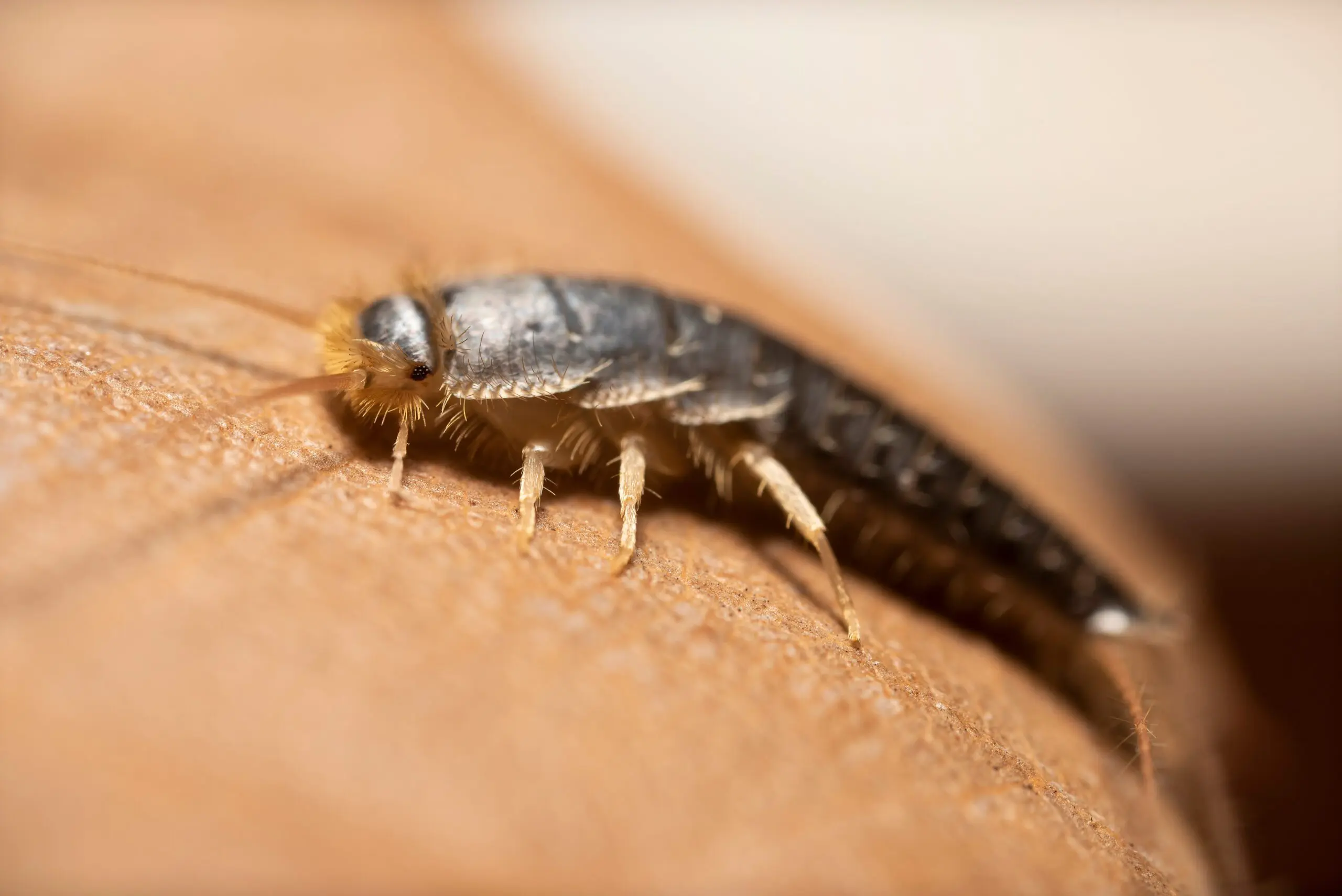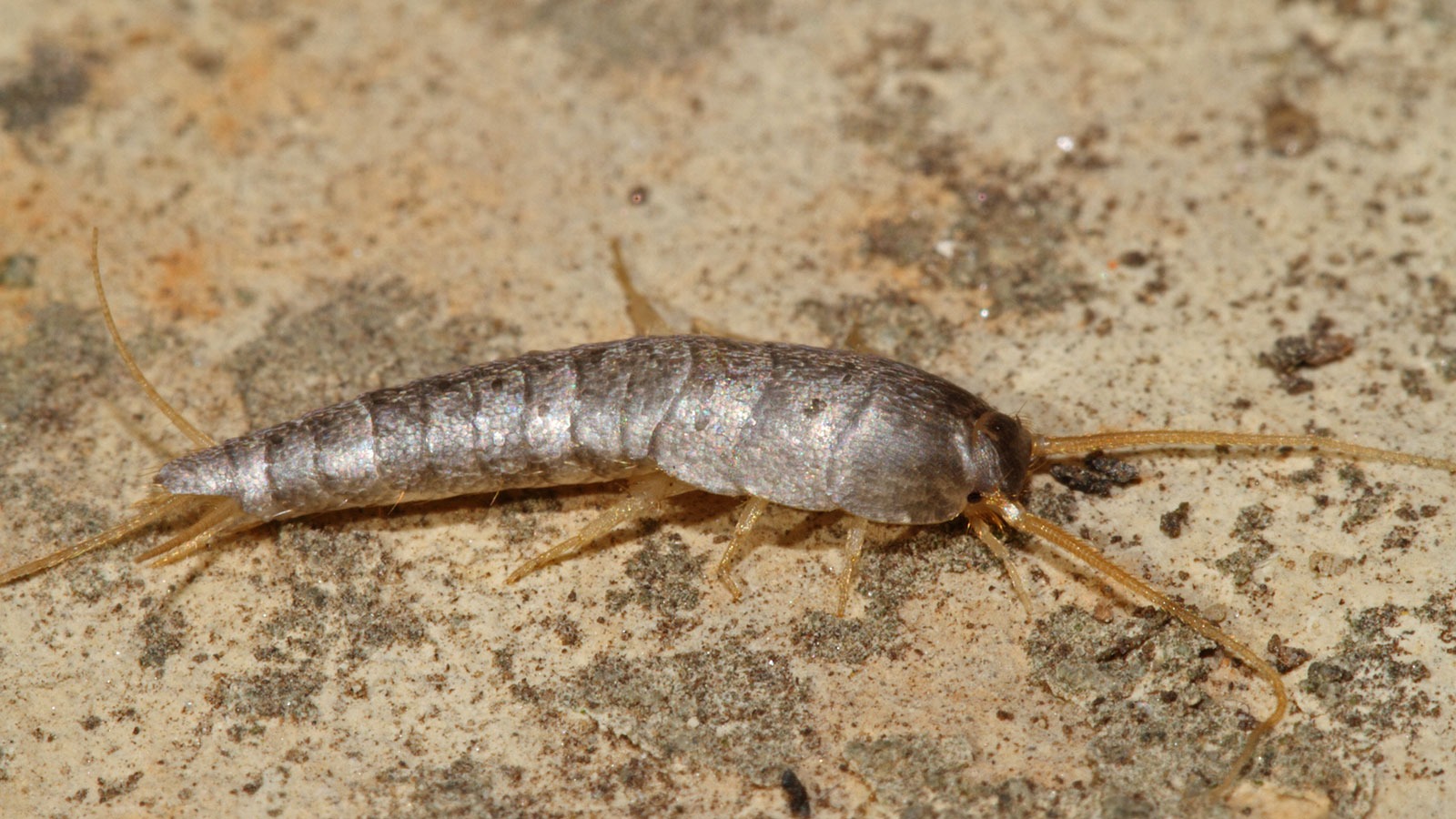Silverfish, the small, silvery-gray insects often seen darting quickly through dark corners, are a common household pest. Though they may appear harmless at first glance, their presence should not be ignored. These insects can cause significant damage if left unchecked. This article will explain why silverfish are a concern in the home and what steps you can take to deal with them effectively.
What Are Silverfish?
Silverfish (Lepisma saccharina) are wingless insects known for their distinctive, elongated bodies and silvery-gray color, which gives them a metallic sheen. They are easily recognized by their rapid, wriggling movements and their ability to hide in the darkest corners of the home. Silverfish are typically nocturnal, emerging at night to forage for food.
Silverfish thrive in damp, cool environments and are commonly found in areas like kitchens, bathrooms, basements, and attics. They are also attracted to spaces behind furniture or in cracks and crevices where they can remain undisturbed. These insects are not a direct threat to humans as they do not bite or sting, but their presence can still cause significant issues within the home.

Why Do Silverfish Invade Your Home?
Silverfish are primarily attracted to environments that offer moisture and a steady food source. These pests are known to feed on starch, cellulose, and sugary substances, which can be found in a variety of materials around the home. Common items that silverfish feed on include:
- Paper products: Books, newspapers, and important documents
- Food scraps: Especially starchy or sugary substances like crumbs
- Fabric: Including clothing, curtains, and upholstery
While silverfish do not transmit diseases to humans, their feeding habits can result in significant damage to personal belongings. They can chew through paper, fabrics, and even wallpaper, leaving visible damage in their wake.

The Risks Silverfish Pose
Although silverfish are not dangerous in the traditional sense, their presence in your home should not be taken lightly. Here are some potential issues that silverfish can cause:
- Damage to Books and Documents: Silverfish often feed on paper, which can cause significant damage to books, photographs, and important documents. Over time, this can result in the deterioration of valuable or sentimental items.
- Destruction of Clothing and Upholstery: Silverfish are known to chew on fabrics such as clothing, carpets, and curtains, leaving behind small holes or stains. This can be particularly problematic for items made of natural fibers like cotton, linen, or silk.
- Rapid Infestation: Silverfish are prolific breeders. A small infestation can quickly escalate if left unchecked. Female silverfish can lay up to 20 eggs at a time, and with their fast reproduction cycle, an uncontrolled infestation can lead to a larger problem that is more difficult to manage.

How to Prevent and Eliminate Silverfish
If you’ve spotted silverfish in your home, it’s essential to take immediate steps to prevent them from causing damage. Here are some effective ways to prevent and control a silverfish infestation:
1. Reduce Humidity
Silverfish thrive in humid environments. The most important step in controlling these pests is to reduce the moisture levels in your home. Here’s how:
- Use a dehumidifier: Dehumidifiers can help reduce moisture levels in damp areas like bathrooms and basements.
- Fix leaks: Repair any water leaks in pipes, faucets, or roofs. This will eliminate moisture sources that attract silverfish.
- Improve ventilation: Ensure that areas prone to humidity, such as bathrooms and kitchens, are well-ventilated. Open windows or use exhaust fans to reduce moisture buildup.
2. Maintain Cleanliness
Regular cleaning can help eliminate potential food sources for silverfish. Pay attention to the following:
- Vacuum frequently: Regular vacuuming helps to remove crumbs, dust, and food scraps, which silverfish feed on. Be sure to vacuum corners, behind furniture, and along baseboards where silverfish may hide.
- Wipe down surfaces: Clean kitchen counters, bathroom surfaces, and floors to eliminate food residues.
- Store food properly: Ensure that food is stored in airtight containers to prevent silverfish from accessing it.
3. Seal Entry Points
Silverfish are adept at finding small cracks and gaps in your home. To prevent new infestations, it’s important to seal potential entry points. Check:
- Windows and doors: Make sure that windows and doors are properly sealed to prevent silverfish from entering the home.
- Cracks in walls: Fill any cracks or holes in walls and baseboards where silverfish could hide or enter.
- Floor gaps: Seal gaps around floors and in closets, particularly if you have carpeting or other organic materials that silverfish are attracted to.

4. Use Natural Repellents
There are several natural repellents that can help deter silverfish:
- Cedar: Silverfish dislike the scent of cedar. Consider using cedar chips or cedarwood blocks in closets or drawers where silverfish might hide.
- Citrus: Silverfish also dislike citrus. You can use essential oils like lemon or orange to create a natural deterrent. Simply dilute a few drops in water and spray it in areas where silverfish are present.
- Diatomaceous Earth: This fine powder can be sprinkled in areas where silverfish are seen. It’s harmless to humans and pets but lethal to silverfish, as it dehydrates them.
5. Chemical Treatments
In cases of severe infestation, chemical treatments may be necessary. However, these should be used as a last resort, as they can have harmful effects on humans and pets. Consider:
- Insecticidal sprays: These sprays can kill silverfish on contact. Be sure to use them according to the manufacturer’s instructions and avoid spraying near food or children.
- Bait stations: Silverfish baits contain a toxic substance that the insects take back to their nests, effectively killing the colony.
6. Call a Professional
If the infestation is large or persistent, it may be time to call a pest control professional. Exterminators can provide a thorough inspection of your home and recommend the most effective methods for eliminating silverfish.

Conclusion
Although silverfish are not a direct threat to human health, their ability to cause damage to books, documents, fabrics, and other materials makes them a nuisance that should not be ignored. By understanding their behavior, reducing moisture in the home, maintaining cleanliness, and taking preventive measures, you can protect your home from silverfish infestations. In cases of severe infestations, it may be necessary to seek professional help to effectively eliminate these pests.
Sources:
- “Silverfish: Identification, Prevention, and Control,” National Pest Management Association, 2022.
- “How to Prevent and Control Silverfish,” American Pest, 2021.
- “The Life Cycle of Silverfish,” University of California Agriculture and Natural Resources, 2020.
